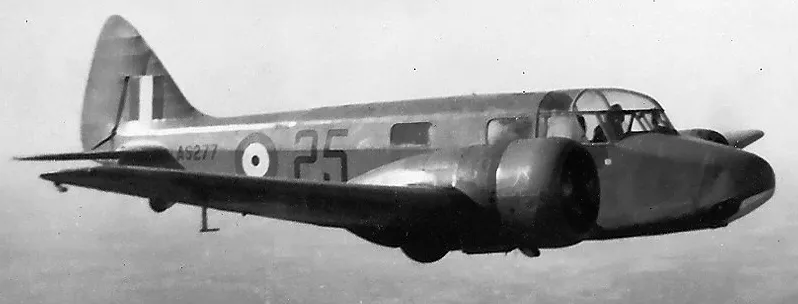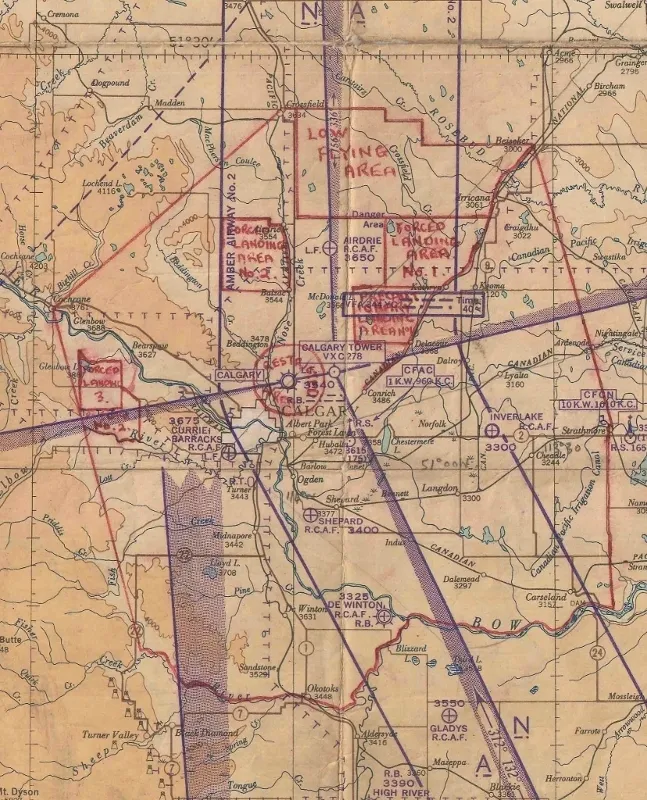Dunbavand, Edward Cecil (Leading Aircraftman)
Killed in Flying Accident 1942-January-14


Birth Date: 1914-February-10
Born:
Parents:
Spouse: Elsie Jane Dunbavand, of Derby, England
Home:
Enlistment:
Enlistment Date: unkown date
Service
RAFAAF
Unit
37 SFTS- Service Flying Training School (RAF)
Base
RCAF Stn. Calgary, Alberta
Rank
Leading Aircraftman
Position
Service Numbers
1218546
Crew or Other Personnel
Oxford AS382
Oxford serial: AS382

Airspeed A.S. 10 Oxford Mk. II, RCAF (Serial No. AS277), 25, in flight over Saskatchewan, 1942.
The Airspeed AS.10 Oxford was a twin-engine monoplane aircraft developed and manufactured by Airspeed. It saw widespread use for training British Commonwealth aircrews in navigation, radio-operating, bombing and gunnery roles throughout the Second World War.
The Oxford was developed by Airspeed during the 1930s in response to a requirement for a capable trainer aircraft that conformed with Specification T.23/36, which had been issued by the British Air Ministry. Its basic design is derived from the company's earlier AS.6 Envoy, a commercial passenger aircraft. Performing its maiden flight on 19 June 1937, it was quickly put into production as part of a rapid expansion of the Royal Air Force (RAF) in anticipation of a large-scale conflict.
As a consequence of the outbreak of war, many thousands of Oxfords were ordered by Britain and its allies, including Australia, Canada, France, New Zealand, Poland, and the United States. Following the end of the conflict, the Oxford continued to achieve export sales for some time, equipping the newly formed air forces of Egypt, India, Israel, and Yugoslavia. It was considered to be a capable trainer aircraft throughout the conflict, as well as being used a general-purpose type. A large number of Oxfords have been preserved on static display. Wikipedia
Aircraft Images
Oxford AS382
Oxford Mk. II AS382
Taken on strength at No. 2 Elementary Flying Training School at Fort William, Ontario. To No. 4 Training Command on 1 October 1941, for use by No. 37 Service Flying Training School at Calgary, Alberta. Still with this School when it suffered a Category A crash near Three Hills, Alberta (50 miles north-east of Calgary aerodrome) on 14 January 1942. Struck trees during a mock attack on a school house, during unauthorized low flying. Leading Aircraftman E.C. Dunbavand, RAF killed. Had 162:15 logged time when struck off. Scrapped by No. 10 Repair Depot.1941-08-29 Taken on Strength No. 2 Training Command 2019-08-20
1942-January-14 Accident: 37 Service Flying Training School Loc: Three Hills Alberta Names: Dunbavand
1942-08-18 Struck off Strength Struck off, reduced to spares and produce 2019-08-20
Unit Desciption
37 SFTS (37 Service Flying Training School)
Graduates of the EFTS "learn-to-fly" program went on a Service Flying Training School (SFTS) for 16 weeks. For the first 8 weeks the trainee was part of an intermediate training squadron; for the next 6 weeks an advanced training squadron and for the final 2 weeks training was conducted at a Bombing & Gunnery School. The Service schools were military establishments run by the RCAF or the RAF.
There were two different types of Service Flying Training Schools. Trainees in the fighter pilot stream went to an SFTS like No. 14 Aylmer, where they trained in the North American Harvard or North American Yale. Trainees in the bomber, coastal or transport pilot stream went to an SFTS like No. 5 Brantford where they learned multi-engine technique in an Airspeed Oxford, Avro Anson or Cessna Crane.

Noteable RAF Instructor pilots based at No. 37 SFTS during the war, was F/O Peter Middleton, the grandfather of Catherine Middleton who is now the Duchess of Cambridge and the wife of Prince William.
For More Information on RCAF Station Calgary see here
RCAF.Info - RCAF Station Calgary AB
RCAF.Info - Relief Landing Field Airdrie AB
RCAF.Info - Relief Landing Field Inverlake AB
![]() Bomber Command Museum Of Canada - 37 SFTS
Bomber Command Museum Of Canada - 37 SFTS
Calgary Wings SFTS37 History
![]() Clarence Simonsen - Calgary Wings 37 SFTS History.pdf
Clarence Simonsen - Calgary Wings 37 SFTS History.pdf
![]() YouTube - Valour Canada Aerodrome of Democracy
YouTube - Valour Canada Aerodrome of Democracy
![]() YouTube - GHOSTS OF THE FOOTHILLS - The BCATP's Hidden Legacy in Alberta
YouTube - GHOSTS OF THE FOOTHILLS - The BCATP's Hidden Legacy in Alberta